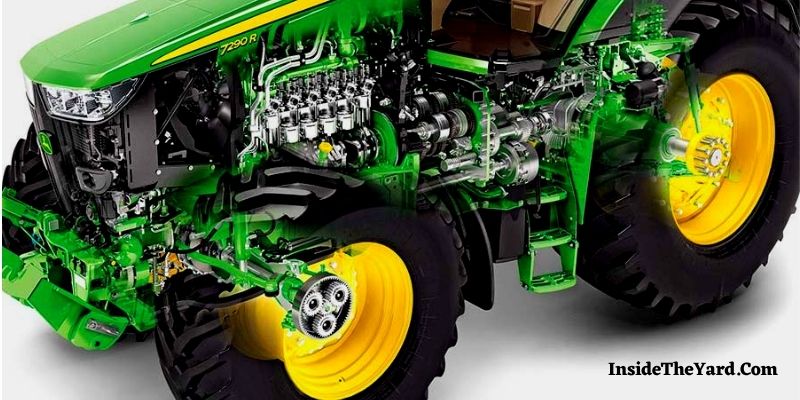The John Deere 100 series is a line of entry-level lawn and garden tractors that have been produced by the John Deere company since 2001. The 100 series was designed to provide homeowners with a basic tractor for yard work and light landscaping tasks. Despite their low price, these tractors have proven to be durable and reliable.
However, like all machinery, they are not without their problems. One common issue that owners of John Deere 100 series tractors face is transmission problems.
If you’re a John Deere 100 series owner, then you know that these tractors are built tough. But even the toughest tractor can have transmission problems from time to time. Here are some common issues that you may encounter with your John Deere 100 series transmission:
1. Slipping Gears: This is probably the most common transmission problem that John Deere 100 series owners face. If your tractor starts to slip gears, it’s likely due to low hydraulic fluid levels or dirty hydraulic filters. Check your fluid levels and change your filters if necessary.
2. Hard Shifting: Another common issue is hard shifting. This can be caused by several things, including low hydraulic fluid levels, dirty hydraulic filters, or worn clutch discs. Again, check your fluids and change your filters if needed.
You may also need to replace your clutch discs if they’re worn out.
3. Noisy Transmission: If your transmission starts making strange noises, it could be an indication of a serious problem. It’s best to take your tractor to a qualified technician for diagnosis and repair as soon as possible.
Transmission Problem Fix on John Deere 100 Series Riding Lawnmower
What Transmission is in the John Deere 100 Series?
The John Deere 100 series tractors come standard with a hydrostatic transmission. This transmission provides an infinite number of forward and reverse gears, making it easy to operate the tractor. The hydrostatic transmission also allows for speed changes on the fly, without having to stop and change gears.
What Goes Wrong With Hydrostatic Transmission?
Hydrostatic transmissions are used in a variety of applications, from lawn tractors to construction equipment. However, like any piece of machinery, they are not without their own set of problems. Here are some of the most common issues that can occur with hydrostatic transmissions:
1. Leaks
One of the most common problems with hydrostatic transmissions is leaks. These leaks can be caused by worn seals or gaskets, cracked housing, or loose fittings.
If left unchecked, hydrostatic transmission fluid leaks can lead to serious damage to the transmission and decreased performance.
2. Cavitation
Cavitation is another common issue that can occur in hydrostatic transmissions.
This happens when there is not enough fluid getting to the pump, causing it to work harder and eventually overheat. This can be caused by a number of factors, including low fluid levels, clogged filters, or restricted flow due to debris build-up.
3. Overheating
As mentioned above, cavitation can lead to overheating in hydrostatic transmissions. But even if cavitation isn’t an issue, overheating can still occur due to other factors such as excessive load on the transmission or operating in high ambient temperatures. If your transmission starts to run hot frequently, it’s important to have it checked out by a professional as soon as possible before serious damage occurs.
How Do You Adjust a John Deere Hydrostatic Transmission?
If you have a John Deere hydrostatic transmission, there are a few things you can do to adjust it. First, check the oil level and make sure it is full. Next, check the drive belt and make sure it is tight.
Finally, check the hydrostatic filter and clean or replace it if necessary.
Does John Deere Have Hydrostatic Transmission?
Yes, John Deere does have hydrostatic transmission. A hydrostatic transmission is a type of power transmission that uses pressurized hydraulic fluid to drive the engine. It is typically used in tractors and other heavy duty equipment.

Credit: www.youtube.com
John Deere Hydrostatic Transmission Problems
“John Deere Hydrostatic Transmission Problems”
Many John Deere hydrostatic transmission problems have arisen over the years. The common problem with these transmissions are leaks.
The main seals that can fail are the input shaft seal, output shaft seal, and charge pump o-rings. These components can develop cracks and grooves over time which will lead to fluid leaks. Another problem that can occur is debris getting into the transmission fluid causing it to become contaminated.
This will cause the transmission to not function properly and eventually fail.
To prevent these problems from occurring, it is important to regularly check your John Deere hydrostatic transmission for leaks and have the fluids changed according to the manufacturer’s recommendations. It is also important to keep any dirt or debris out of the transmission by keeping a clean work area and using clean tools when working on your machine.
Conclusion
John Deere 100 Series Transmission Problems have been plaguing owners of these lawn tractors for years. The main issue seems to be with the hydrostatic transmission, which is what provides power to the wheels. There have been reports of it slipping, not engaging properly, and even leaking fluid.
John Deere has issued a few recalls over the years in an attempt to fix the problem, but it seems to be a continual issue. Some owners have had success by replacing the transmission with an aftermarket one, while others have just given up and sold their tractor. If you’re experiencing problems with your John Deere 100 Series Transmission, you may want to look into getting it replaced or repaired.
